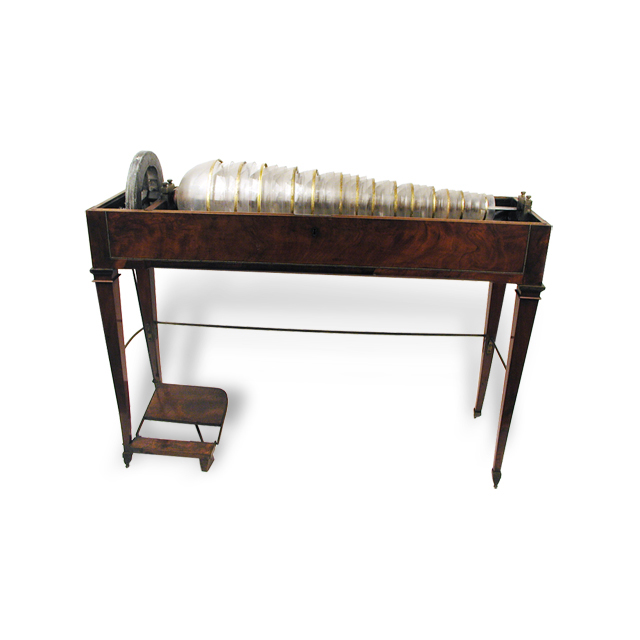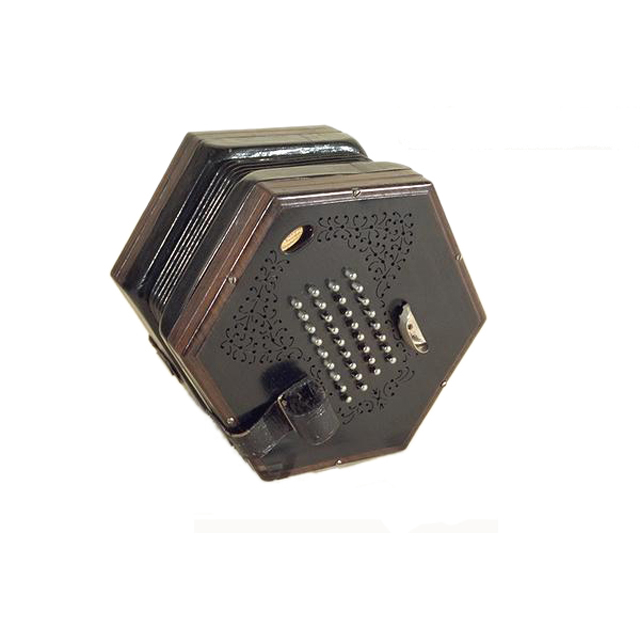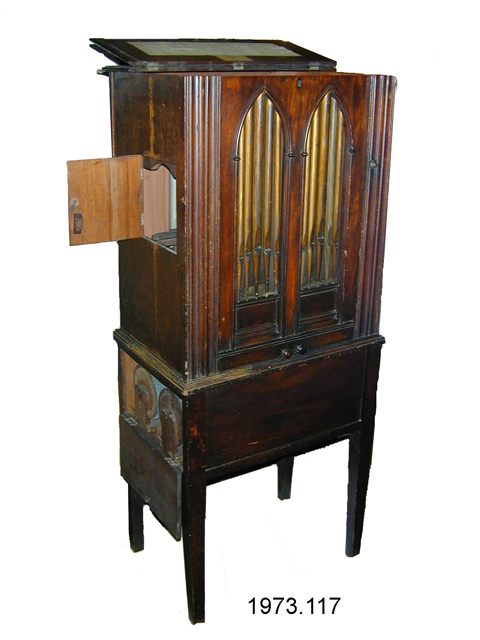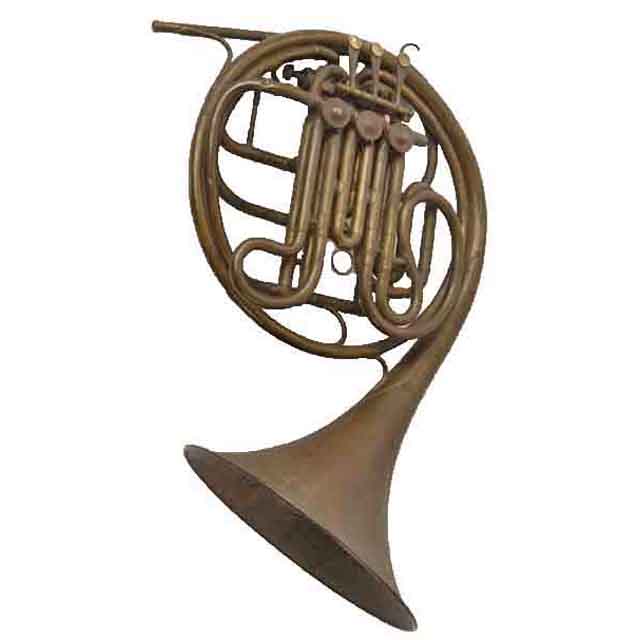
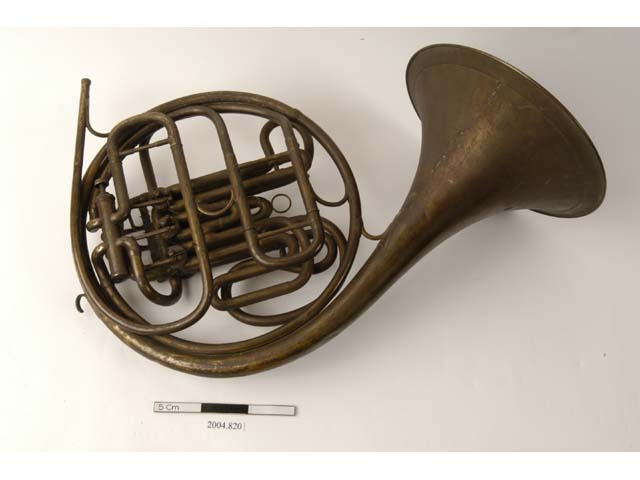
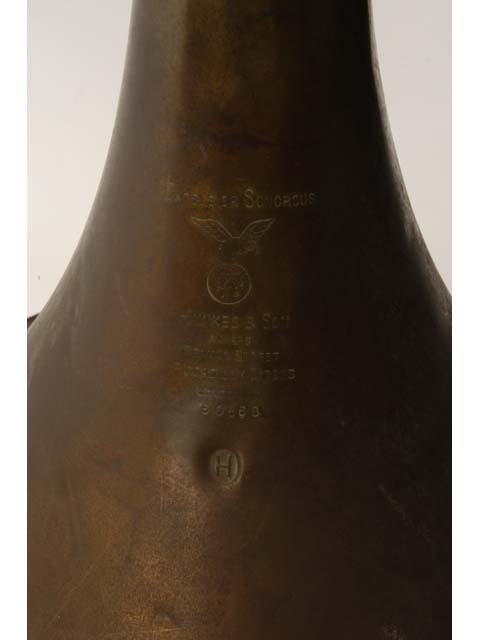
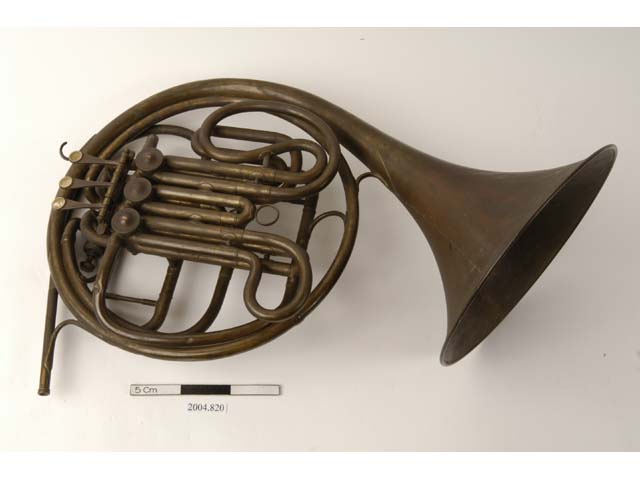
Orchestral double horn in F & Bb, brass tubing, three string-action rotary valves and left-thumb piston valve. Full double system. Mouthpiece missing. Stamped on bell: EXCELSIOR SONOROUS/HAWKES & SON/MAKERS/DENMAN STREET/PICADILLY CIRCUS/LONDON.W/60668/H. Bell bears Hawkes & Son eagle and globe device. Stamped on piston casing: HAWKES & SON/LONDON
During the 1930s, British horn players began to experiment with the German wide bore double horn because it offered greater flexibility and security, particularly in the horn's notoriously trecherous high register. This came at the expense of the distinctive tone quality of the narrow bore French horn that was characteristic of British horn playing in the early 20th century. This instrument was an attempt to combine the French-style narrow bore prized by English players with the security of the German double horn. However, this hybrid design suffered from poor intonation and tone quality and few instruments of this type were made. Players gradually adopted the German-style double horn.




